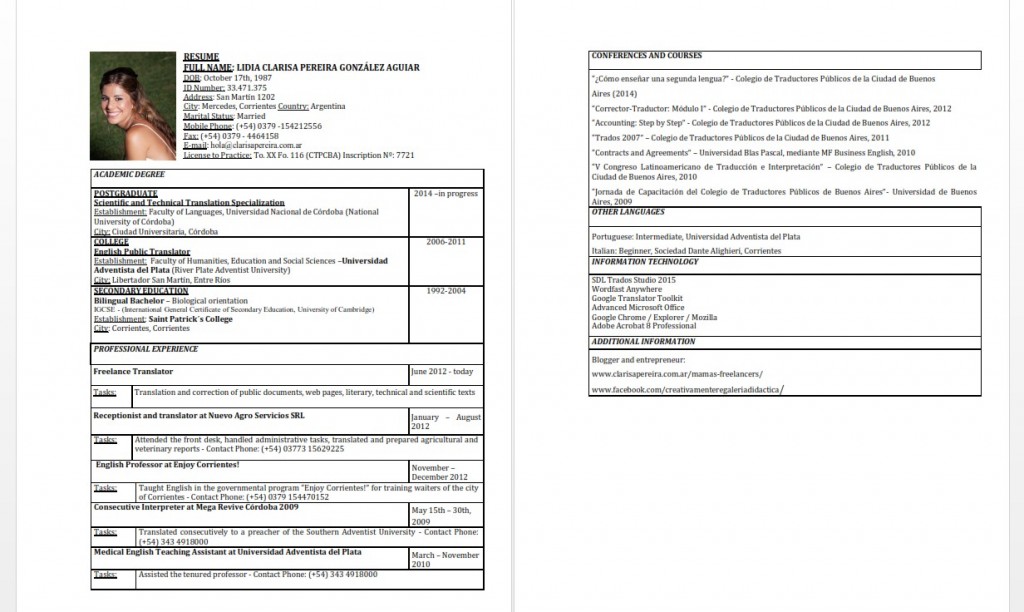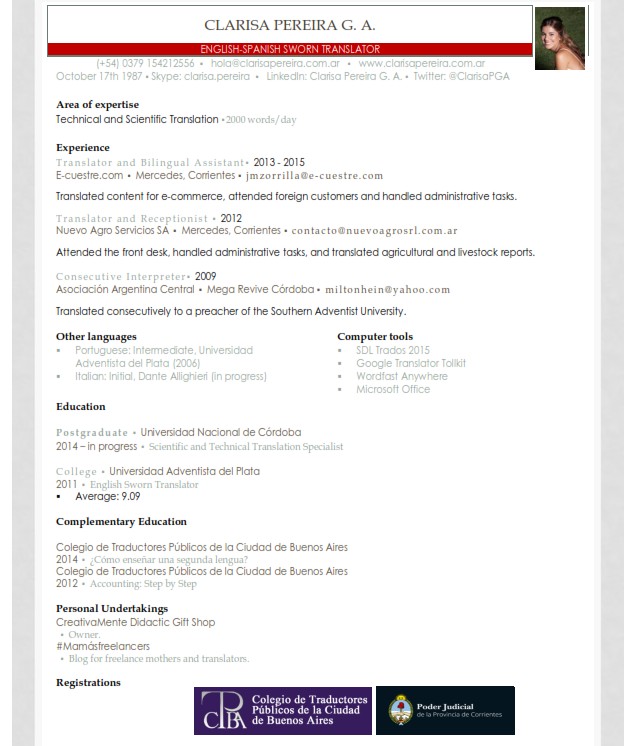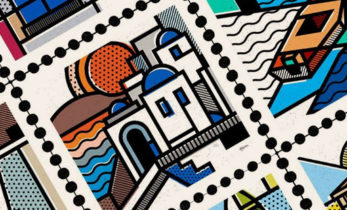Greater than 2 minutes, my friend!
It’s never too late: Update your CV!
“I’ve sent dozens of CVs to every agency on the Net, but it was in vain.” Does this sound familiar to you?
In my last year at the Public Translation course, I attended a class called Actualización profesional (Professional Updating) where I learnt how to build CVs, budgets and cover letters, among other things. I based on that first CV and I started using it from then on. Whenever I attended a course or did something new, I just modified or added information on that CV, but to be honest, I hardly ever got any positive feedback from it.
I thought the problem was that I was too young (which was also true), but I didn’t realize that any person who actually received my CV had certain expectations and I had to fulfill almost all of them in order to get a reply.
To make it simple, I contacted a HHRR specialist, Fernando Koncurat, who works at Adeco Agro and is constantly receiving CVs and interviewing candidates. I showed him the following two CVs, my first CV and a new CV I built several months ago. With confidence, he shared 7 tips for creating a promising CV.
- Brevity is the soul of wit. Don’t make it too long –you’ll have plenty of time to explain any additional information you like when you are interviewed; but for the moment, stick it to 1 or 2 pages at most. Summing up your CV to 1 page is a plus. “Candidates make the pre-selection process easier when they send a concise and clear CV”.
- Boast about your grades. Don’t be afraid of including your average to the description of your university career. Key point: In Argentina, averages above 8 are expected from students that attended public colleges.
- Highlight your personal achievements. For HHRR specialists, your goals and achievements are even more important than the conferences you attended. Then, if you are a volunteer at any NGO, if you have other interests or other ventures, include them in your CV.
- Add a picture, no matter if it is from your wedding. He asked me, “Do you accept LinkedIn invitations from people you don’t know and who don’t have a picture in their profile?” My answer was “No”. At least in Argentina, sending a CV without a picture may be considered as you’re hiding something. (IMPORTANT: In the United States, only professional photos are added)
- Show your certificates only when requested. The only thing that a HHRR worker will do when receiving an email attaching a CV is opening the CV. Whatever you send together with the CV will probably be overlooked. If they are interested in you (in this case in your CV), they will contact you again and ask for additional information.
- Solutions, rather than weaknesses. Describing your virtues and weaknesses may not be an easy task, or an honest one! Adding this kind of information is useless, but if you do, you should have the solutions to the weaknesses in hand because they will ask about them in the interview.
- Watch out for empty spaces. If you are called for an interview, the first thing they will ask you is about the time you spent without working. Ideally, you should have all dates included (or at least an excellent alibi!)
I hope you can take advantage of this entry and if you found it useful, please share it!
Picture: www.thenextweb.com and www.communitytable.parade.com






